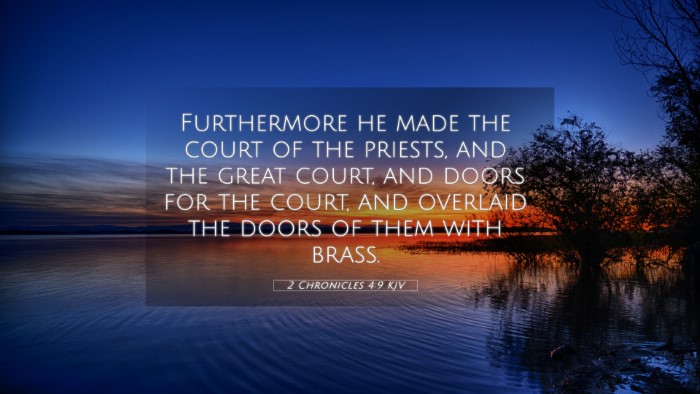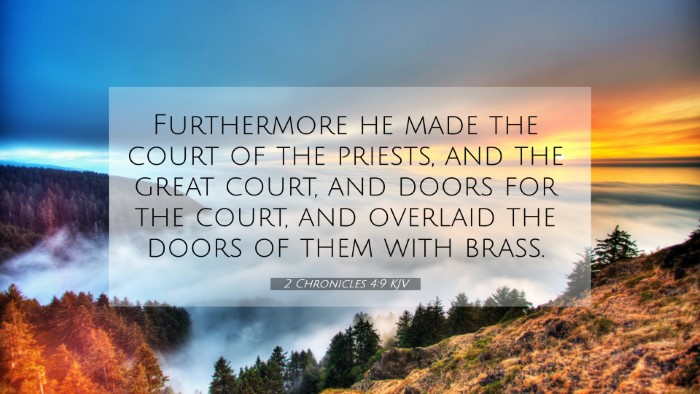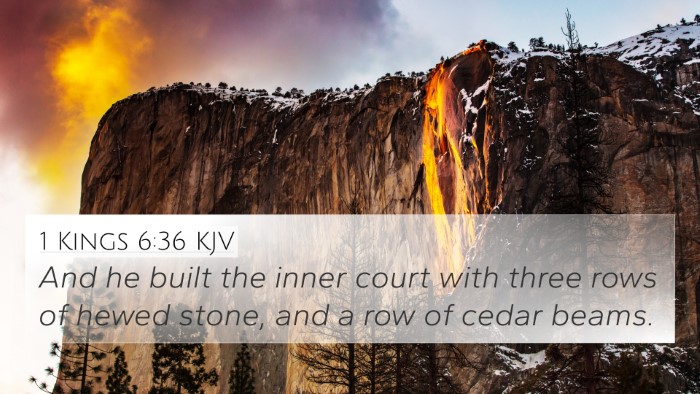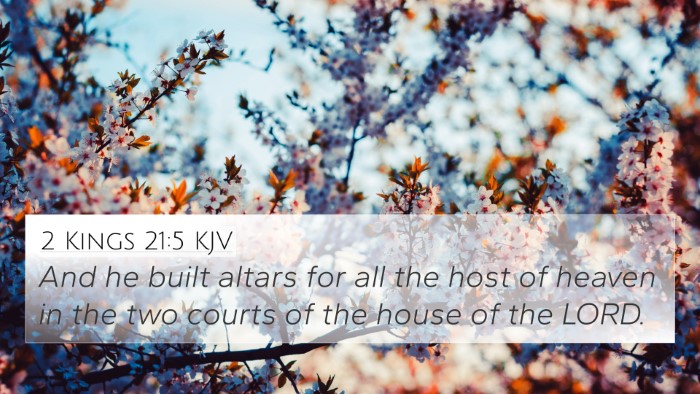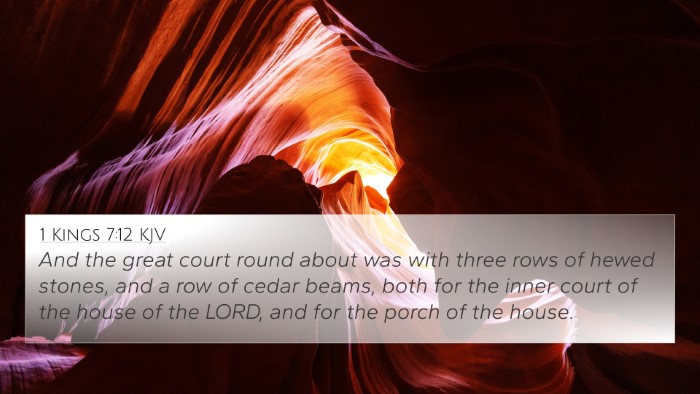Understanding 2 Chronicles 4:9: A Comprehensive Analysis
“And he made the the brazen altar, twenty cubits the length thereof, and twenty cubits the breadth thereof, and ten cubits the height thereof.”
Verse Meaning
The verse describes the construction of a significant altar, emphasizing its large dimensions as a place of sacrifice in the temple dedicated to the worship of the Lord. The altar being made of brass (or bronze) indicates its durability and the necessity of such a structure in Israel's sacrificial system.
Significance of the Altar
According to Matthew Henry, the brazen altar symbolizes the atonement and the necessity of sacrifice in approaching God. The grandeur of the altar reflects the serious nature of sin and the cost of reconciliation.
Albert Barnes emphasizes the physical characteristics of the altar and its role in priestly duties, connecting it with the sacrificial system that points to the future sacrifice of Christ. It serves as a reminder of the fragility of humanity and the grace extended through divine provision.
Adam Clarke notes that the altar’s dimensions convey the importance of making adequate preparations for worship, underscoring the principle that God deserves our best in matters of worship and service.
Thematic Connections
The discussion of the altar in this verse connects with several overarching biblical themes:
- Sacrifice: The need for a mediator and means of atonement highlighted throughout the Bible.
- Worship: The act of approaching God with reverence and understanding.
- Holiness of God: The necessity of sacrifices to reconcile the holy nature of God with fallen humanity.
Cross-References
This verse is interconnected with multiple scripture references that enhance its understanding:
- Exodus 27:1-2: Description of the brazen altar's construction.
- Leviticus 16:24: The significance of sacrificial offerings on the altar.
- Hebrews 9:22: The importance of shedding blood for forgiveness of sins.
- 1 Corinthians 5:7: Christ as our Passover lamb and the ultimate sacrifice.
- John 1:29: Identifies Jesus as the Lamb of God who takes away the sins of the world.
- Psalm 51:17: A broken spirit and contrite heart are essential for true worship.
- Romans 12:1: Presenting our bodies as living sacrifices in service to God.
Applications for Today
This verse challenges believers to reflect on the importance of sacrifice and worship in their lives. It serves as a reminder to prioritize God's requirements over personal preferences. In contemporary worship, understanding the historical context of sacrifice deepens our appreciation for the grace extended through Jesus Christ’s ultimate sacrifice.
Conclusion: Emphasizing Cross-Referencing Biblical Texts
The systematic linking of related Bible verses allows for a richer understanding of scriptural teaching. Tools for Bible cross-referencing, such as concordances and study guides, empower believers to uncover deeper insights. Engaging in comparative Bible verse analysis can reveal significant themes and connections, fostering a thorough comprehension of faith in practical living.
Final Reflections on Inter-Biblical Dialogue
This verse illustrates the continuity of God's message throughout the Scriptures, linking the practices of Old Testament worship with New Testament revelations. As we explore these connections, we gain a greater understanding of the character of God and the design for worship within the Christian faith.

